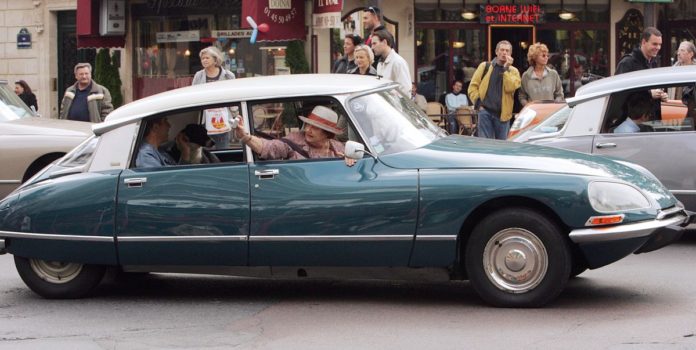From 1955 to 1975, Citroën’s flagship DS and closely related ID were cutting-edge luxury cars designed around a complex self-leveling hydraulic suspension. The line began life as a technological marvel and ended it as a historically significant relic of an era of dreams that never came to be, and the surviving examples of nearly 1.5 million cars built over that time are among the most beloved cars on the road today. Citroën had a few successors in the years afterward, but nothing in the brand’s modern history has come close to touching the ambition of the original DS. That might finally change very soon.
According to a conversation with DS brand executive Olivier François shared by England’s Auto Express, the DS brand (a separate line spun off of Citroën by parent company Stellantis) is now considering avenues to bring the rich history of the beloved model to life in its lineup of EVs. That means embracing the original car’s signature sleek aerodynamics, potentially even down to the covered rear wheels used on the original DS and ID. It could also mean a direct successor to the DS, as a full-on flagship on the STLA Large platform used underneath the new Dodge Charger Daytona.
The flagship on the company’s most ambitious platform would likely be the most exciting car ever built under the DS stand-alone brand. While speed was never a strength of the original DS, the STLA Large platform’s ability to support multi-motor EV setups on an 800-volt architecture could allow for power outputs well above the 670 horsepower offered on the fastest 400-volt Charger Daytona variant. The Dodge flagship is notably not designed with efficiency as a focus, so a more aerodynamic DS could beat the R/T model’s 317 miles of range on the EPA cycle and come closer to 400 miles on the WTLP cycle used in Europe. With the 800-volt architecture allowing for faster charging, the car could get from 10 to 80 percent of that usable range in just 20 minutes on the right charger.
All of those things are nice, but they are par for the course in a modern premium EV. To make this car stand out in the same way that the brand’s namesake once stood out, DS would need to offer both an unforgettable design and something unique about the car itself. That could be a hydraulic suspension like the one seen on the original DS and ID, and François says he “still [loves] the idea of” the system on a modern car. That would make it more complicated and more expensive, but it would also make the car ride like a DS should. François says that the model “should be large, expensive, and amazing,” which certainly fits the profile of an art deco design draped over the STLA Large platform and separated from the road by a hydraulic suspension.
Whether or not the DS flagship actually exists, François says that the design cues from the original DS are “a gene that is not difficult to transmit to various categories of cars.” That should mean smaller and more affordable cars with some DS inspiration are coming, too.
Unfortunately, none of these cars seem destined for the U.S. any time soon. While we already get the STLA Large platform in the form of the Dodge Charger and should also receive other cars built on the brand’s top underpinnings over the next two years, Stellantis has been reluctant to bring either Citroën or DS into the market. The stand-alone DS brand was said to be on its way in 2016, but unlike the Renault-related Alpine, it has not announced any plans to head stateside in the near future.

